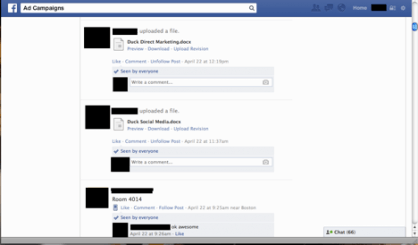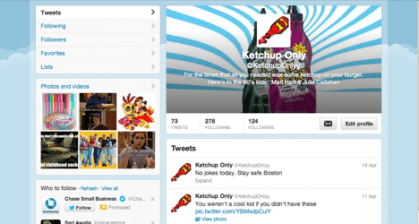Using Social Media In School Projects
As a senior in college, I can honestly say that I don’t remember the last time I did a group project without social media. Everyone my age is on one site or another, so it is simply the most efficient, time saving, and easiest way to keep in touch both socially and professionally. Whether it be for referencing, connecting, collaborating, or what have you, there aren’t many things that social media can’t be used for in a group project.
With that being said, there are three main social media powerhouses that provide a perfect example of this: Facebook, Twitter, and YouTube. It may sound obvious, but if you look at any sites outside of these, their specific uses for collaboration in education can be compared to one of the “Big 3.” It is almost like picking the members for the group itself: Each one needs to play a specific role. Once you have those roles they need to be put together in order to create something greater than the individuals themselves. It’s the classic teamwork strategy we’ve been teaching and learning forever. The following article will explain the role of the big three with real life project examples.
- Facebook is the main headquarters of the project; the leader if you will. In Facebook, the group message board is where everything gets done. Ideas are spread, opinions are voiced, and arguments are had. You can post any references from links found on other social media sites, as well as your own PDF or Word documents as well. Before anything gets passed into the professor or put onto another social media outlet it is generally talked about in the Facebook group first.

Fig 1: A Facebook group used for my Ad Campaigns class last semester - Twitter can plays a few roles in the project. First of all, it can be used to find sources. Generally students in a project who have a Twitter account will follow businesses, professionals, or group pages on Twitter related to their area of expertise. For example: I follow companies such as Hill Holliday and Mullen (major Boston advertising agencies) as well as people such as Andrew Graff (the CEO of Allen & Gerritsen, a major Boston agency). These Twitter pages generally post insightful information on advertising and branding, which could be used as a reference in the group project.The second role Twitter plays in a group project is with marketing. If you are trying to promote your project as a company or product, your Twitter page is a direct reflection of what you stand for. What you say on your Twitter account can be used to promote what you are doing and gain considerable recognition. A perfect example of this is a project I was assigned last semester. My professor asked the class to come up with an idea (could be anything) and promote it on Twitter and Facebook. It could be strictly social media, it could be a product, a cause, etc. We simply gave the professor the links to our pages and she kept tabs on it throughout the semester. This is a rare and great recognition by an instructor of the power of social media in both learning and the current business world.

Fig 2: The Twitter page of my group project last semester - Youtube, much like Twitter, can serve multiple purposes in a group project. Also like Twitter, one of these purposes is referencing. If you look past all of the entertainment on Youtube, you can find very educational information there. For example, if I were to type in social media in higher education, there are pages and pages of credible videos in which people both advocate for it’s uses and provide legitimate data to back it up. Not to mention, for many visual learners it is easier to retain knowledge through a video rather than the basic scholarly article. There are far more possibilities to use examples, simulations, and animation to get the information across when video is the source.YouTube can be used for the actual making and turning in of the project as well. With so many students using Mac’s and iPhones these days, the ability to make and edit your own movie is super simple. All Mac laptops come with a program called iMovie, which allows you to do all of the basics in editing a film. The same group shown in Fig. 1 used this strategy for our project. We created a brand essence video using iMovie which we uploaded to YouTube and showed the professor along with a powerpoint presentation. I have even seen this technique used with sophomores in High School. Last school year, I helped video tape and edit two projects for my brother. We then simply uploaded them to YouTube, and the teacher went to the link in class. Super simple, easy, and engaging.
In conclusion, social media is awesome. It has way more uses than being just social. Students are recognizing the communication abilities social media has in e-learning and putting it to use on a daily basis. I hope that instructors can learn from this article and really try to meet the students half way. Make social media assignments for your classes or a Facebook group for an entire class. Bring the classroom together on social media and be aware of the changing landscapes that it is bringing to the world.









